MOBILITY OBSERVATORY SENSORS
Tr@nsnet’s ambition is to develop a University Living Lab for the ecological transition. The project has enabled the establishment of a mobility observatory within UT3’s campus. Sensors for mobility counting and other equipments were installed to observe and measure mobility flows to better understand mobility behaviour on our campus to facilitate, anticipate and guide changes in travel, and at the same time to build databases of real traffic on our campus to improve knowledge of active and multimodal mobility.
As part of this project, Activity 2.2 members (mobility observatory) worked with the Campus Soft Mobility Unit and the CEREMA to identify both the most efficient equipment on the market and the appropriate location to better assess campus flows.
For the choice of equipment, with the expertise of the CEREMA, it was agreed to bet on a mix of equipment by combining a robust but intrusive and fixed technology such as the magnetic loops of the company Eco-compteur, with a proven technology that can be moved from one site to another such as the radars of the company TagMaster.
Considering the performance and innovation of the equipment available on the market, the choice of the mix of devices fell on two ZELT loops (fixed technologies), two Pyro-Box evo and two radar counters of the company TagMaster (four movable) installed in strategic sites of the campus for the evaluation of the flows of the university community.
The positioning of the sensors was defined following field visits in the presence of representatives of UT3, the representative of CEREMA and that of the Soft Mobility Group. These field visits made it possible to select four sites for the installation of the sensors. It should be noted that the Management and Operations Department (EMS) of the campus accompanied us in this process for the authorizations of the installation of the equipment.
Finally, the installations concerned only the first three sites, namely:
Site 1: Administration
This site is located opposite the University Administration at the main entrance to the campus. On this site, pedestrian flows cross on the South-West / North-East axis (Allée Louis Lareng) mainly from the metro and bicycle flows that cross the Cours des Sciences bike path. These flows are important especially during morning rush hour and noon, hence the installation of a Pyro-Box Evo counter (09/12/22) for counting pedestrian flows accompanied by ZELT loops (17/01/23) to measure bicycle use. The Pyro-box Evo has a range of 10 meters with a battery life of 2 years. It is equipped with passive infrared pyroelectric technology and a high-precision lens to detect the heat emitted by the human body.
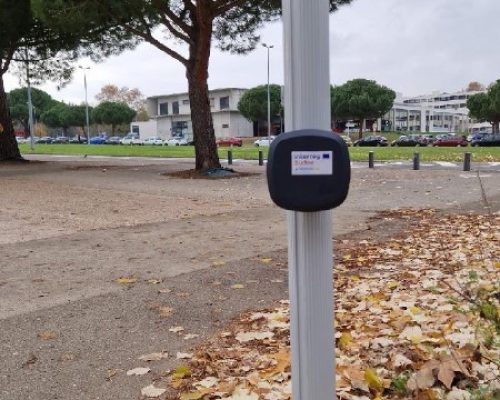
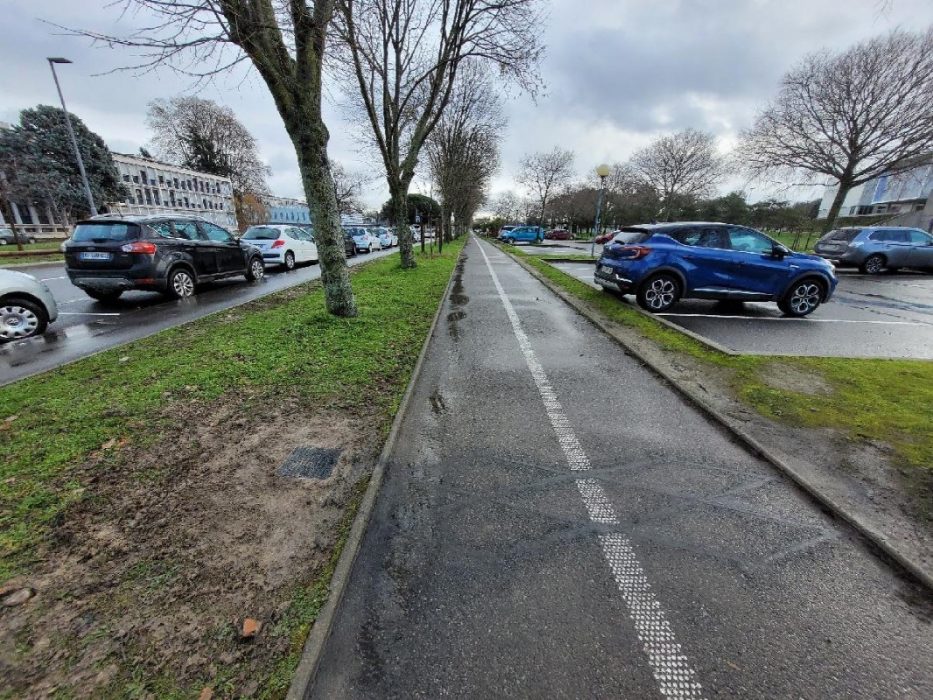
Pyro-Box Evo: pedestrian counting ZELT loops: science courses
Site 2. Food Truck
On this site, active modes intersect on the North-West / South-East (Chemin de Mignonac / Allée du campus de Rangueil) and North-East / South-West (Allée Huguette Delavault / Rue Hypathie) axis. At noon, the CROUS Food Truck is installed on this site which leads to significant pedestrian flows. Thus, the Pyro-Box evo makes it possible to measure pedestrian flows inside the campus.
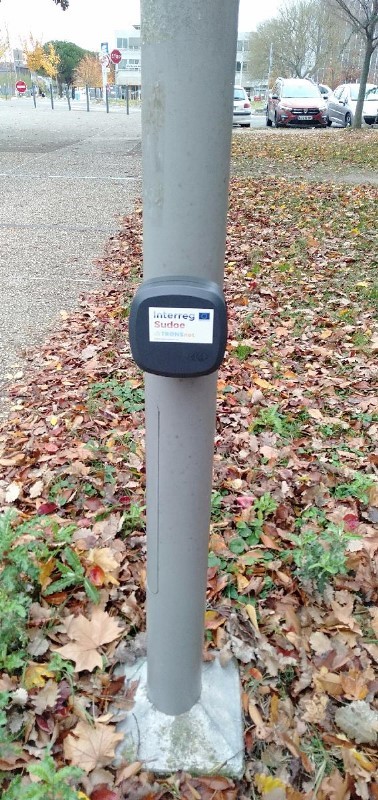
Pyro-Box Evo: pedestrian counting
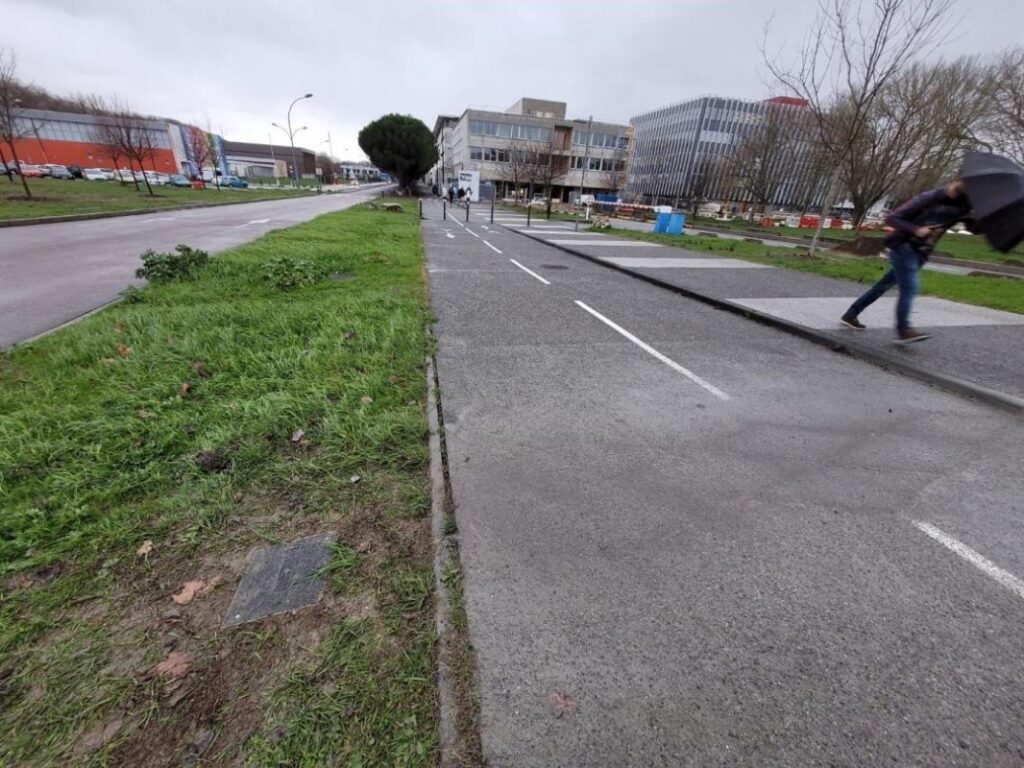
ZELT loop: : Alley Hugette Delavault
Site 3. IUT-informatics
The choice of this site is not trivial, it is frequented by several modes of transport (pedestrians, bicycles, cars) and several types of transit flows and local service. For soft modes, the forecourt of the IUT-informatique is a place where transit traffic and local traffic are intertwined which is why we installed the cityradar (08/12/22). This meter is characterized by the simultaneous detection of pedestrians and bicycles up to 8 meters in range with a level of counting accuracy of more than 95%. In this sense, it is able to distinguish between two wheels and pedestrians, which allows a classification of bicycle and pedestrian traffic without an intrusive sensor on the ground.
On this site, a TrafficRadar (08/12/22) is also installed for counting motorized traffic. The specificity of this radar counter is its ability to manage unidirectional and bidirectional traffic flows with a range of 15 meters.
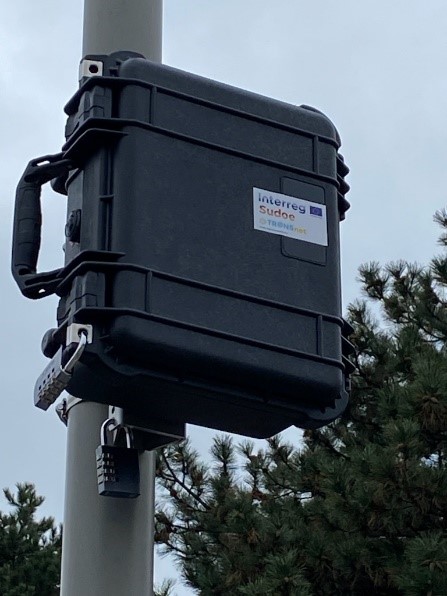
CityRadar: pedestrians/bicycles
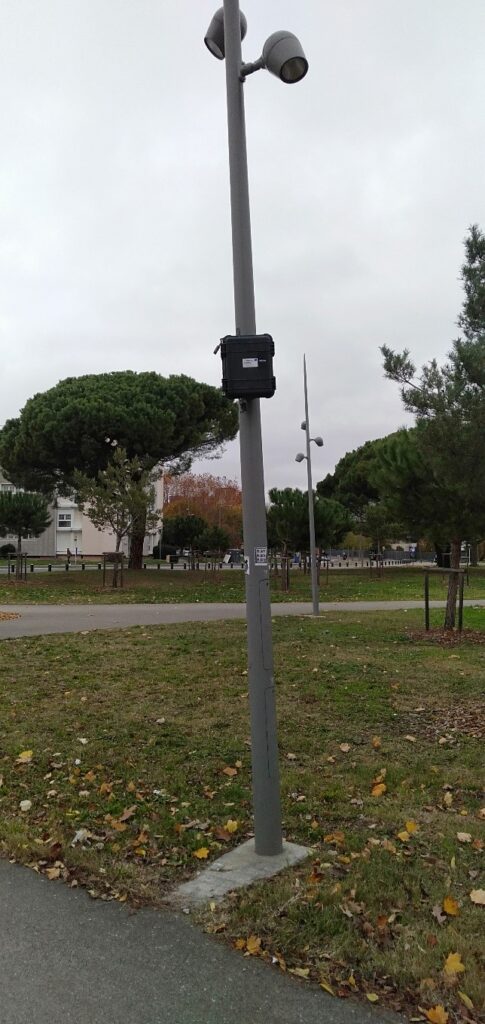
Trafficradar: motor vehicles
Designed to measure flows in urban space, UT3 is one of the first universities in France to be equipped with such a device to evaluate mobility within its campus. On a European scale, we share the same project with the FCUL. They have installed pneumatic tubes for counting bicycles. Together, we defined the same indicators to be observed.
As for data collection and analysis, it should be noted that the equipment of the company Eco-meter (Pyro-Box Evo and ZELT loops) allows remote data transmission automatically every 24 hours. This data will be processed automatically via the eco-visio.net website. This website allows the parameterization and reporting of meter data.
In contrast, data from the cityradar and trafficradar meters are collected manually using Bluetooth communication. The company (TagMaster) has also developed an Android application EasySetup that allows both the setting and storage of meter data. The data, once stored, can be transmitted in the TagMaster web application, EasyAnalysis which converts the DAT file recorded by the counter into an Excel file.
